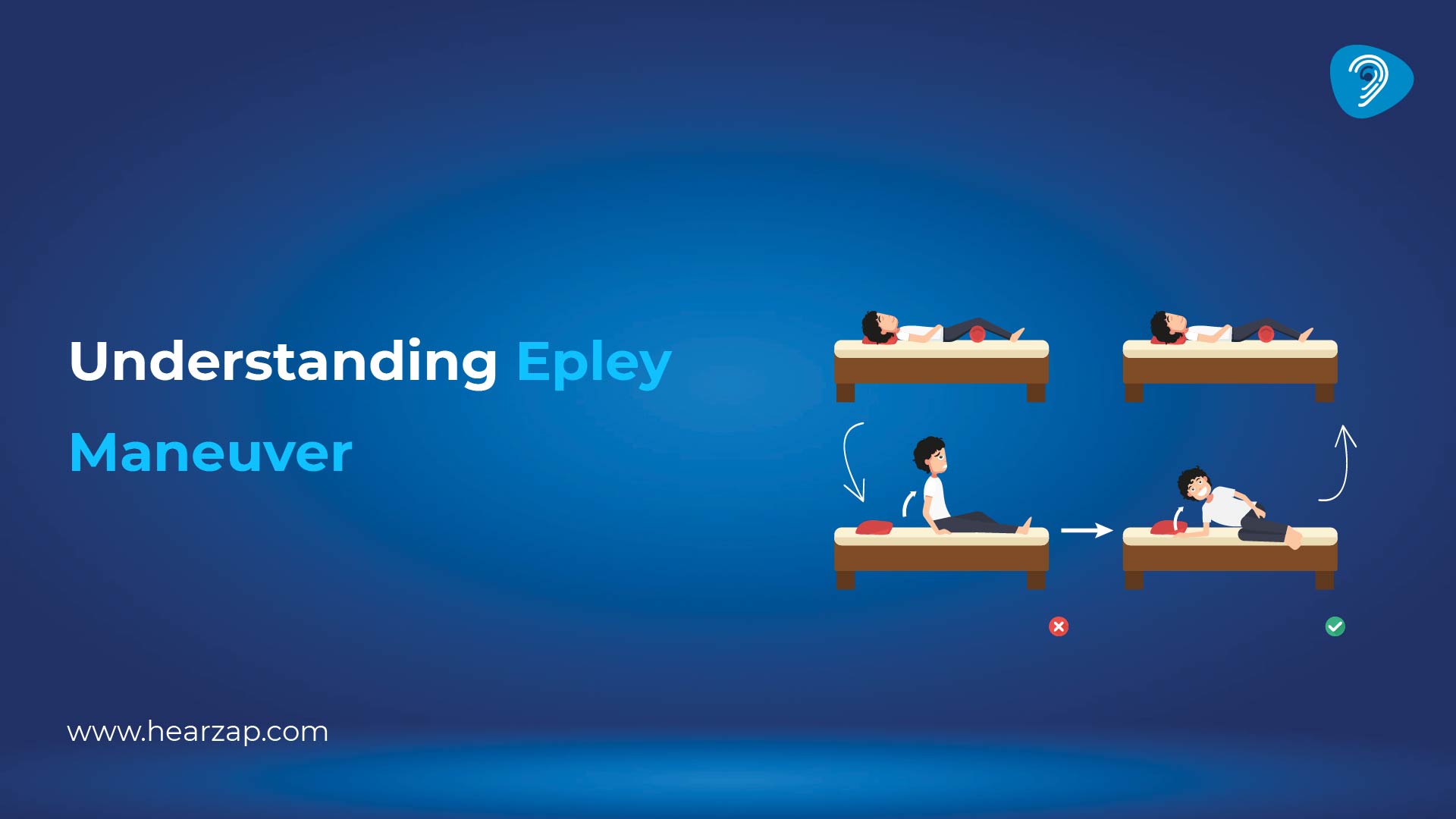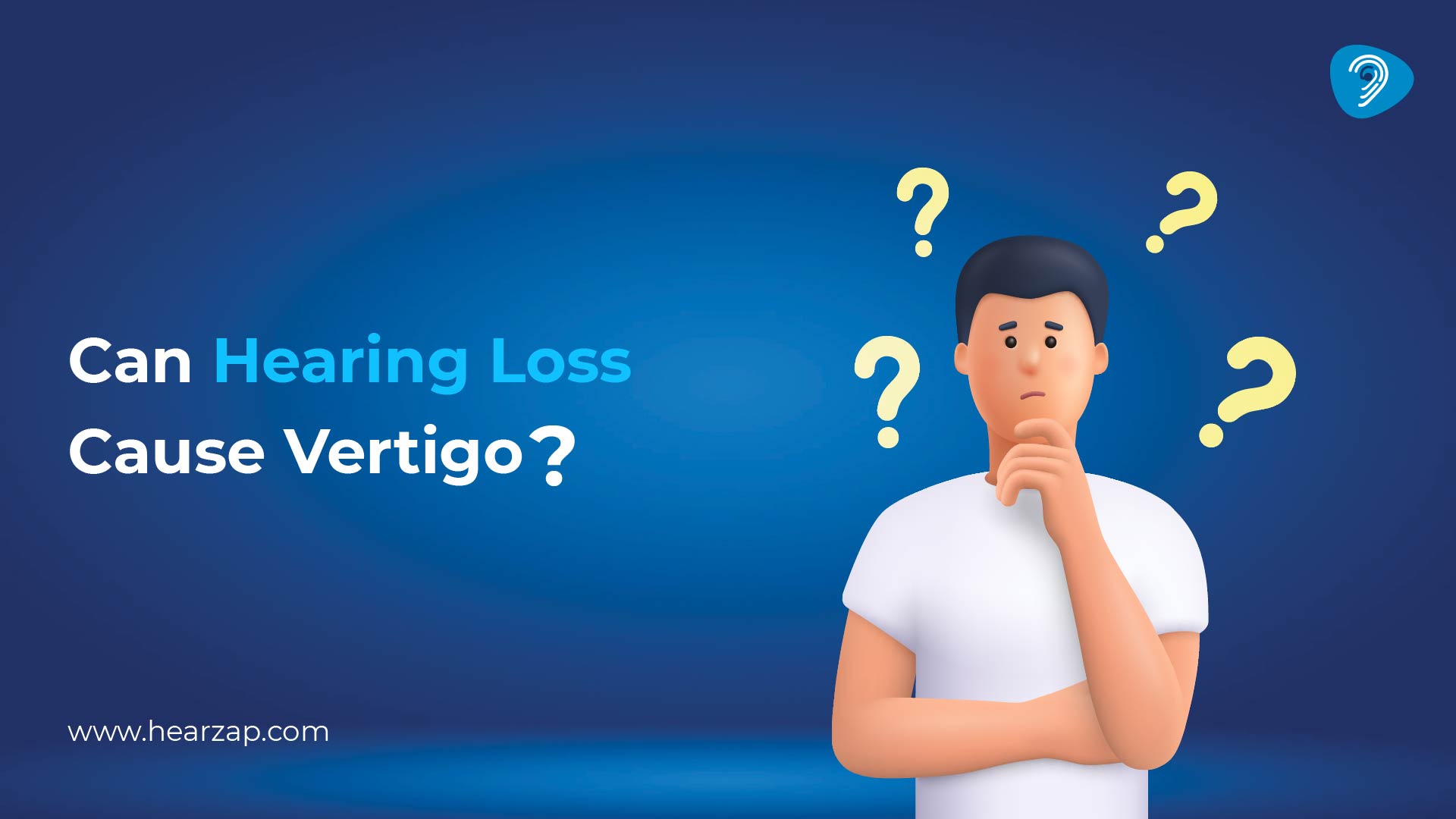Generic
Epley Maneuver: A Simple Technique That Helps Vertigo Feel Less Scary
By Team Hearzap | Nov. 17, 2025

In case you ever experienced the sensation in which the room suddenly rotates when you are lying down, rolling over in bed or looking up, then you are not the only one.
Vertigo is a common experience among many people, and one of its most frequent causes is BPPV which stands for Benign Paroxysmal Positional Vertigo. It’s unsettling, it can feel random, and it can interrupt everyday life — but the good news is that a simple technique called the Epley maneuver often brings quick relief.
This guide explains what it does, why it works, and how people use it both in clinics and at home. Throughout this, the tone is simple, supportive, and rooted in real clinical experience.
Why Vertigo Happens in the First Place
Inside your inner ear are tiny crystals that help you stay balanced. When these crystals shift into a place they don’t belong, the ear sends confusing signals to the brain — and that’s when vertigo strikes.
The benign paroxysmal positional vertigo Epley maneuver was created to gently move those crystals back where they should be so your balance system can settle down again.
It’s one of the most trusted treatments for BPPV because it deals with the root cause instead of just easing symptoms.
How the Epley Maneuver Helps
BPPV is caused by crystals floating in the wrong canal inside the ear. The Epley maneuver uses a slow, guided sequence of head and body movements to shift them back into place. This is why many clinicians recommend the Epley maneuver BPPV approach—it’s straightforward, effective, and safe for most people.
Some patients feel relief almost immediately. Others notice steady improvement over the next few hours. Either way, the technique has been used for decades with strong results.
Epley Maneuver Steps Explained in Simple Terms
Most people appreciate knowing what to expect before trying the Epley maneuver steps. Here’s how it typically works for right-ear BPPV:
- You sit on your bed with your legs stretched out.
- You turn your head 45 degrees to the right.
- You lie back quickly with your head slightly hanging — this is usually when brief spinning happens.
- After that settles, you gently turn your head 90 degrees to the left.
- Then your whole body turns another 90 degrees so you’re almost facing the mattress.
- After holding that position, you slowly sit up.
These movements guide the crystals through the canal until they reach a non-sensitive part of the ear. When done correctly, the Epley maneuver for vertigo often feels surprisingly simple.
What You Might Feel During the Maneuver
It’s completely normal to feel a short burst of spinning during one or two positions. In fact, that response helps confirm that the right part of the ear is being treated. Most people feel steadier within minutes. A bit of light-headedness afterward is also common and usually settles quickly.
If the spinning feels unusual or persists for days, it’s worth checking in with your clinician for a reassessment.
Can You Do the Epley Maneuver at Home?
Many people do! The Epley maneuver at home can be a big help, especially when vertigo returns suddenly. But it’s best to learn it from a professional first. That way, you know exactly which ear is affected, how fast to move, and what symptoms are normal.
If you have neck pain or back issues, or if your vertigo doesn’t match classic BPPV patterns, it’s safer to let a clinician guide you.
How Soon Does It Work?
Some people walk out of the clinic feeling noticeably better. Others need a few repetitions across a couple of days. BPPV can come back months or years later, but repeating the Epley maneuver usually helps again.
Most patients appreciate how quick and non-invasive it is — no medication, no machines, just careful positioning.
When Is It Important to Get Medical Advice?
While BPPV itself is not dangerous, vertigo accompanied by certain symptoms needs attention:
- Sudden hearing loss
- Severe headaches
- Persistent vomiting
- Vision changes
- Weakness or numbness
- Vertigo that lasts longer than a minute
These may point to something other than BPPV, and getting checked early is important.
The Bottom Line
The Epley maneuver has been and is still considered one of the best treatments for BPPV. The procedure, whether administered in a doctor's office or facilitated at home under proper care, is the way to downward the first condition of BPPV by transferring the otoliths to their natural place.
For most people who suffer from Benign Paroxysmal Positional Vertigo (BPPV) Epley maneuver, getting rid of the vertigo is something that is less frightening and more manageable. All that is needed is the right instruction, some patience, and perhaps a little practice before it becomes a very useful tool to help you in living a normal life and even doing things you love without being afraid of vertigo attacks.
To begin with, if your symptoms are spinning episodes that are similar to BPPV, you should visit a professional for an evaluation done by either an audiologist or an ENT doctor. The accuracy of the diagnosis is crucial—in addition, using the correct method can return you to a state of balance.
FAQs
1. Can the Epley maneuver make vertigo worse?
It may trigger brief spinning during the movements, but it rarely makes vertigo worse long-term.
2. What is the Epley maneuver?
It’s a guided series of head and body movements designed to shift loose inner-ear crystals that cause BPPV.
3. How many times should you do the Epley maneuver?
Most people need one to three repetitions, depending on how quickly their symptoms settle.
4. How many times to do the Epley maneuver?
You can repeat it up to two or three times in a session if dizziness improves with each attempt.
5. How often to do the Epley maneuver?
You must perform this once or twice a day for a few days. However, please visit an audiologist who can guide you based on your symptoms.
Contact us
We are here for all your hearing needs, from hearing tests to hearing aids. Fill out the form below, and we will give you a call soon.
Please enter a valid mobile number with 10 digits.
Recent Blogs
By Team Hearzap | Nov. 5, 2025
By None | Nov. 4, 2025
By None | Nov. 3, 2025
By Team Hearzap | Nov. 1, 2025
By None | Oct. 24, 2025












